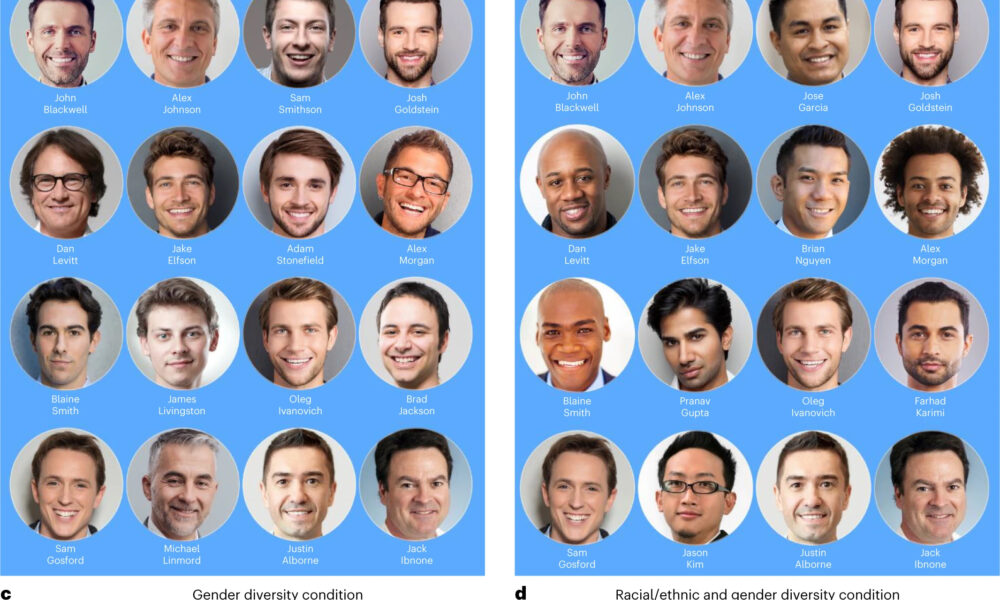Existing research in the field of psychology has shown that organizational diversity influences the work environment and the behaviours of individuals seeking employment opportunities. In a paper titled “A field study of the impacts of workplace diversity on the recruitment of minority group members,” Jordan Axt, assistant professor in McGill’s Department of Psychology, examined how subtle alterations in organizational diversity—the demographic makeup of a company’s workforce—influence the behaviour of job applicants, as well as the relationship between diversity and recruitment outcomes.
In his research, Axt explored how people form and express intergroup bias across various social domains, such as race, politics, religion, age, sexual orientation, and physical attractiveness. He looks at patterns of human behaviour in an experimental setting, and he also studied ways to measure and reduce intergroup bias.
Conducted during the COVID-19 pandemic, the study employed a field-based approach by creating a realistic-looking website for a technology startup company with virtual job openings. Applicants were randomly assigned to view images showcasing differing levels of gender, racial, and ethnic diversity within the company’s workforce, with their responses providing insights into diversity cues.
This investigation relies on social identity theory, a prominent theory in social psychology that explores how an individual’s thoughts, feelings, and actions are affected by other people.
“[Social identity theory is] the extent to which people gain their identity from themselves and from group membership,” Axt explained in an interview with The Tribune.
In the case of Axt’s study, social identity theory aims to provide explanations for the behaviour of applicants and their responses to different levels of group diversity. Individuals infer an organization’s values based on the representation of people from their own groups within it, influencing their willingness to apply.
To Axt’s surprise, the study’s findings revealed that changes in diversity representations did not significantly impact the demographics of job applicants.
However, analysis of the overall likelihood of opening the job ad link and initiating or completing an application across all applicants suggests that diverse representations across multiple dimensions may reinforce each other and enhance organizational appeal.
One explanation for the surprising trend reflects real-world situations and that practical concerns may take priority when seeking job employment.
“You’re just not paying attention to these types of things; you’re not really as focused on organizational diversity, or maybe the need to have a job outweighs any of your actual organizational diversity concerns,” Axt said.
The experiment highlights the significance of using a field-based approach, rather than relying on evidence from a laboratory setting. This involves creating real-world hypothetical scenarios by allowing participants to reflect on their hypothetical behaviours in the experiment.
According to Axt, the major limitation of the study comes from the fact that it took place during the COVID-19 pandemic. Given the circumstances, all of the positions offered in the study were remote. Consequently, it is uncertain how the dynamics of diversity perception and applicant behaviour might differ if the positions were in-person, where individuals would expect to interact directly with a more or less diverse workforce.
Overall, Axt emphasized that companies that aim to promote diversity in the workplace require more than surface-level representation. The discussion section of the study argues for companies to send stronger signals to effectively impact applicant behaviour.
“So, for example, is there equal representation of diversity across all levels? Is it only that the lower-level people show greater diversity? Is it the case that you have commitments financially to mentoring programs that are going to make it easier for people from stigmatized backgrounds to advance in this organization?” Axt stated. “The idea is that you can’t just put up some non-white faces and say, well, we’ve solved this problem.”
By looking at the effects of organizational diversity and its role in influencing minority job applicant recruitment, the research helps us address the issues in job hiring and focus on strategies to improve workplace diversity for the future.






